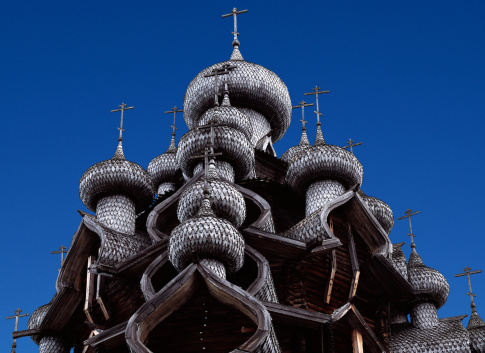
This is not the first time Russia has found itself on the brink of economic disaster in the past 25 years. In the early 1980s the price of oil started pulling back from the highs driven by the oil embargo of the mid-1970s. In 1985 Saudi Arabia refused to cut production to prop up declining crude prices — just as the Saudis and OPEC declined to do earlier this month — and crude prices collapsed.
That collapse cost the Soviet economy about $20 billion a year, or nearly 3% of its gross domestic product in 1990. The then-Soviet Union decided to borrow its way out of the problem, but by 1989 the country’s entire economy froze up. The Soviet government tried to persuade some 300 banks to create a consortium to lend it more money, but only five were willing and the idea flopped.
The only path left was to persuade the governments of richer countries to pony up the cash. Of course, there had to be some horse trading, and what the Soviet Union was forced to give up was its eastern European empire. The fall of the Soviet Union followed.
ALSO READ: Russia’s Economy by the Numbers
President Putin’s goal since the middle of the first decade of the new century has been to rebuild Russian influence and power, and that ultimately led to this year’s incursions into the Crimea and eastern Ukraine. That in turn led to sanctions from Western nations, and Putin has now arrived at nearly the same point Mikhail Gorbachev reached in 1989.
Low crude oil prices and Western sanctions are crippling the Russian economy. Putin has a few options, but nothing short of capitulation may stabilize the economy.
The simplest thing that could change and have a major positive effect from Russia’s point of view is that Saudi Arabia reverses its decision not to cut oil production. That would help prop up crude prices and reduce Russia’s need to borrow or to dip into its reserves. The Saudis may change their minds, but that is unlikely to happen for at least six months, probably longer.
A second option is that the country’s central bank, The Bank of Russia, succeeds in stabilizing the currency. When the central bank in October pumped $30 billion into the foreign exchange market to help slow the fall of the ruble, the effect was just the reverse of what was intended. Since then the bank has increased its overnight rate to 17% in two steps, the first step too little and the second too late.
That brings us to Russia’s third option. If the central bank manages somehow to stabilize the ruble, then it may be able to get a handle on Russia’s borrowing costs and staunch the flow of rubles out of the country. Standard & Poor’s has said that it may consider cutting the country’s debt rating to junk as soon as January. Russian banks and companies are on the hook for $101.6 billion in loan repayments in 2015, and a junk rating makes matters worse, even perhaps forcing Russia into a deal similar to the unspoken deal Gorbachev made in 1989.
ALSO READ: World Demand for OPEC Crude to Fall in 2015
The fourth measure Russia may try is to dip into its reserve fund to cover its budget shortfall next year. An official with the Russian Finance Ministry said earlier in December that the ministry may borrow more than $9.3 billion from the fund to meet 2015 needs and that over three years the fund would contribute about $27.7 billion to meet the country’s deficit. Russia’s current account balance is strong and its currency reserves could sustain the country through either the low price of oil or the sanctions imposed by the West. But combating both at the same time is likely beyond the country’s ability.
Getting OPEC to cut production and, theoretically at least, drive up the price of oil is a step that would ease the pressure on Russia’s currency and its finances. The other thing that would lift the cloud over the economy would be eliminating the Western sanctions. On their own the sanctions probably would have prevailed in weakening the Russian economy, but collapsing crude prices have sped up the process.
The issue for Putin now is what the Russians would have to give up in exchange, and the answer is not as simple as it might appear.
The West would likely insist that Russia pull out of eastern Ukraine at least, and may demand a retreat from Crimea as well. Ukraine’s parliament last week voted to drop its non-aligned nation status, and Russia interpreted the move as an overture from Ukraine for membership in NATO. What is happening is that Putin’s geopolitical goals are now running counter to Russia’s economic interests. It is 1989 all over again.
Russia — and Putin — must somehow convince the financial markets that the country will be run in its own best economic interests, not on behalf of some bare-chested dream of rebuilding the Soviet empire. Putin gambled and lost, and now either he or his country has to pay the price.
ALSO READ: Cuba’s Economy by the Numbers
Get Ready To Retire (Sponsored)
Start by taking a quick retirement quiz from SmartAsset that will match you with up to 3 financial advisors that serve your area and beyond in 5 minutes, or less.
Each advisor has been vetted by SmartAsset and is held to a fiduciary standard to act in your best interests.
Here’s how it works:
1. Answer SmartAsset advisor match quiz
2. Review your pre-screened matches at your leisure. Check out the advisors’ profiles.
3. Speak with advisors at no cost to you. Have an introductory call on the phone or introduction in person and choose whom to work with in the future
Thank you for reading! Have some feedback for us?
Contact the 24/7 Wall St. editorial team.


